- Back to Home »
- Abandoned beauty in 'States of Decay'
 The cover photo for "States of Decay," a photo book by Daniel Barter and Daniel Marbaix, was shot in a cathedral in Pennsylvania during their photographic exploration of the northeastern United States.
The cover photo for "States of Decay," a photo book by Daniel Barter and Daniel Marbaix, was shot in a cathedral in Pennsylvania during their photographic exploration of the northeastern United States. 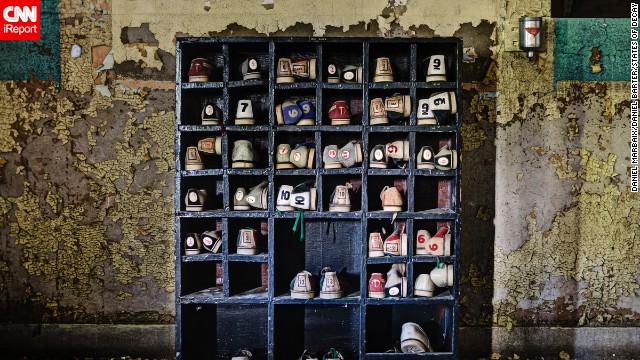 For "States of Decay," the photographers traveled through America's Rust Belt, a geographic term used to describe the economic decline of America's industrial heartland. They found a rack of forgotten bowling shoes in an old asylum in New York.
For "States of Decay," the photographers traveled through America's Rust Belt, a geographic term used to describe the economic decline of America's industrial heartland. They found a rack of forgotten bowling shoes in an old asylum in New York. 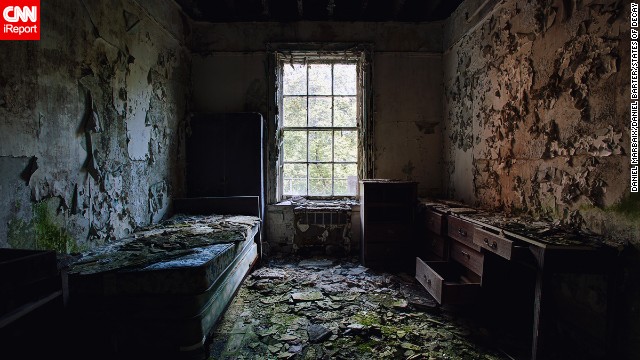 They explored parts of central New York state, where they found this room with a view in an abandoned Masonic lodge.
They explored parts of central New York state, where they found this room with a view in an abandoned Masonic lodge. 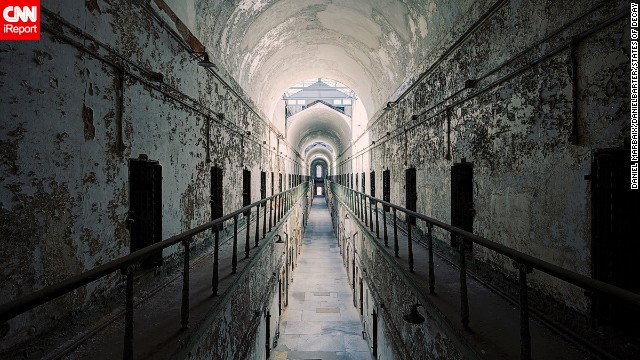 Eastern State Penitentiary in Philadelphia closed in 1971, making for eerie pictures of cellblocks from the defunct prison.
Eastern State Penitentiary in Philadelphia closed in 1971, making for eerie pictures of cellblocks from the defunct prison.  The photographers declined to provide a specific location for most of the sites they visited, including this asylum in upstate New York, citing "exploring ethics."
The photographers declined to provide a specific location for most of the sites they visited, including this asylum in upstate New York, citing "exploring ethics." 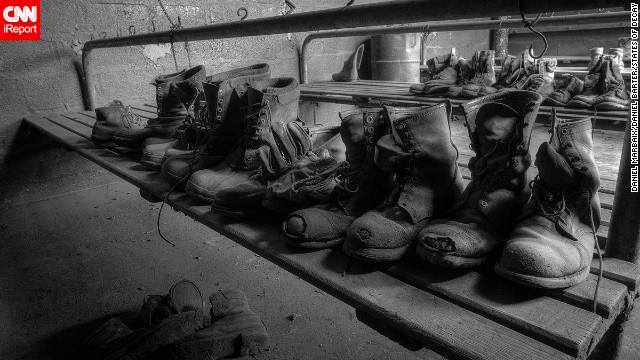 These dusty boots are just a few of the forgotten artifacts they found in this coal-breaking plant in Pennsylvania.
These dusty boots are just a few of the forgotten artifacts they found in this coal-breaking plant in Pennsylvania. 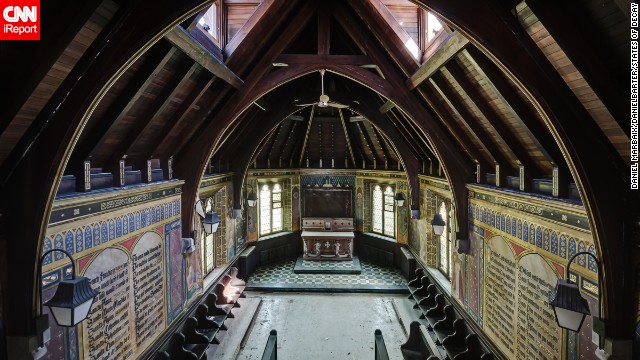 This shot was taken in a chapel in New York.
This shot was taken in a chapel in New York. 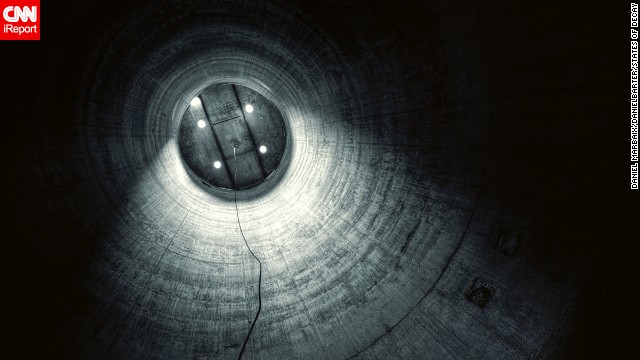 The photographers took pleasure in exploring abandoned structures like this grain silo in upstate New York for the perfect shot.
The photographers took pleasure in exploring abandoned structures like this grain silo in upstate New York for the perfect shot. 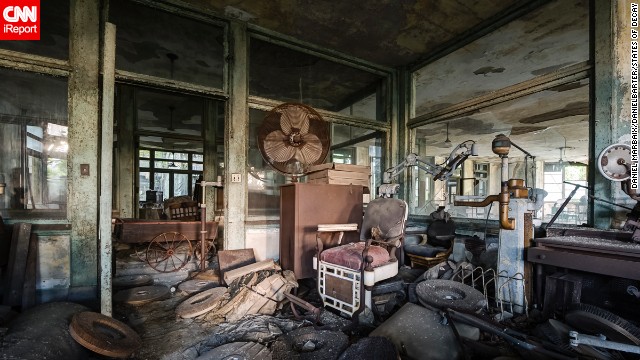 Each room and hall of this defunct sanitarium in New York was ripe for exploration, the photographers say.
Each room and hall of this defunct sanitarium in New York was ripe for exploration, the photographers say.  Their explorations brought them to this desolate theater in Connecticut.
Their explorations brought them to this desolate theater in Connecticut.  The photographers say they didn't stage photos for this series, making this arrangement of televisions in a New York hotel all the more curious.
The photographers say they didn't stage photos for this series, making this arrangement of televisions in a New York hotel all the more curious. 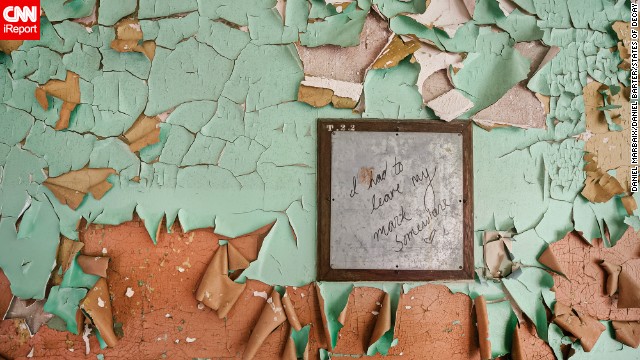 "I had to leave my mark somewhere" says this note found on a wall in a New Jersey asylum.
"I had to leave my mark somewhere" says this note found on a wall in a New Jersey asylum. 
1

2

3

4

5

6

7

8

9

10

11

12
- Abandoned churches, prisons, asylums are the stars of the photo book "States of Decay"
- Photographers Daniel Marbaix and Daniel Barter found their subjects in America's Rust Belt
- A shared fascination with old buildings brought the photographers together
(CNN) -- British photographers and self-described "urban explorers" Daniel Marbaix and Daniel Barter see beauty amid the desolation of abandoned buildings.
Their shoots have brought them to defunct factories, mines and houses of worship around the world, from their native England to Japan. For their first book, they captured the forgotten structures of the eastern United States: ruins of churches and theaters in New York City, derelict train stations, asylums and factories in the Rust Belt.
Images from "States of Decay," published in July, evoke different reactions, especially the book's cover. Shot by Barter, it shows an American flag hanging over a defaced frieze of the Last Supper. Barter said the image reflects the separation of church and state in a reference to American politics.
Citing an "explorers' code," the photographers chose not to provide specific information about the locations of their shoots. Indeed, the decaying structure may or may not reflect a general decline in the surrounding area, regardless of the state of the structure.
A shared fascination with old buildings brought the photographers together. Barter's love of old buildings started as a child. Growing up in North London, he and a few friends would climb a fence after school and play inside a derelict airplane.
"The combination of leather and shiny metal switches was a formative experience for me," said Barter, 29. "If I close my eyes, I can almost still smell it." When he grew older, Barter studied restoration art in college, and that knowledge transformed his interest into a job as a professional photographer.
Meanwhile, Marbaix studied zoology at Royal Holloway, University of London, and somehow fell in love with photography.
"My courses seemed to just spill over into exploring the urban environment and that led to photography," said Marbaix, 33. "I have not looked back since."
When the two first met through friends in a pub in London of 2011, they were competing photographers. But after they learned of their mutual interest in taking photos of "older building and artifacts," a friendship developed that has led to many adventures, for work and pleasure -- often both.
Poking around abandoned buildings has led to a few close calls with authorities, the "Dan duo" said. The mixture of luck and adrenaline has concocted a slew of comical memories for the pair as well as some great shots.
Although many of their shoots might appear to be planned and organized, most of the time they're produced during holidays and trips with friends and family.
"There is not a method to the madness. We just do whatever we feel like," Marbaix said.
While they continue to work on projects centered on the unseen and unfamiliar in Britain, they're looking forward to more adventures.
"We are told that we are too old to be doing this sort of thing," said Marbaix. "But honestly I could care less. My mother loves it and that's all that matters."







